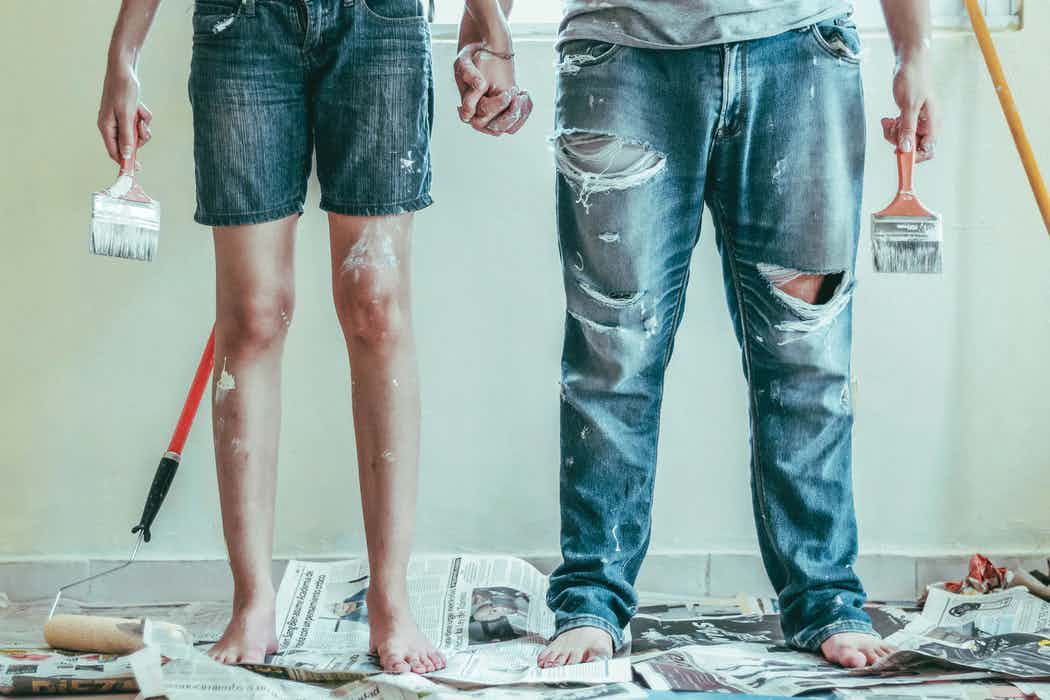Empty nests...the idea may at first seem somewhat solemn, but think about it this way; you can seize this opportunity to renovate and reform your homes into something new and exciting - perhaps something that you always wanted but couldn’t have for whatever reason.
Downsizing has always been a popular option for empty nesters. Moving out of the family home is a huge milestone, and people are increasingly opting to stay in the family home rather than moving.
Besides, even when children fly off to university or leave home to pursue careers in other parts of the country or abroad, there’s no guarantee that they won’t be coming back! And of course, they’ll be making visits over the holidays.
But, that leaves a conundrum - what can you do with all this new space?!
No one likes an empty house with empty rooms, so here are five home renovation projects for empty nesters.
1. Home office and study conversions
The news that your grown-up child’s old bedroom is now a home office might not go down well, but needs must!
More of us are working at home, but even if you’re not, a quiet study space has excellent value and makes use of freshly emptied rooms.
When we think of a home office, we might conjure images of a drab space jammed with paperwork, PCs and printers - it’s time to quash that image and think outside the box.
For example, home offices and studies that draw inspiration from Scandinavian and Japanese design can instate a stillness and calmness that synergises with work activity, aiding our concentration and focus.
Keep the space clean, uncluttered and minimalist. Add houseplants to taste - they’re also great for cleaning and purifying the air.
As William Morris said; “Have nothing in your houses that you do not know to be useful, or believe to be beautiful”.
2. Explore new styles
It’s time to let your design and decor fantasies run free.
Design trends in the UK have become increasingly diverse. From Parisian and classical design to vintage, cottagey feels and Japandi - a fusion between Japanese and Scandinavia design, there’s a lot to explore.
Experimenting with styles is pretty much risk-free if you’re using a freshly empty room as a blank canvas.
It’s not like you’re going all-in and redecorating a major room in your house, so you can get away with a lot more than you usually could.
Japandi
As you might guess, Japandi - Japanese and Scandi - is clean and minimalist. Japanese design also uses colours cleverly inspired by Feng Shui - it’s not all about white and greyscale colouration.
In the Feng Shui colour matrix, black and purple colours combine to evoke focus, career prospects, and prosperity. Green and blue combine to evoke knowledge and studiousness. Red and pink and red evoke love, relationships as well as recognition and ambition.
Fine-tune your space for what you intend to use it for - and how you want to feel when you’re inside it.
Wabi-sabi and shabby chic
Wabi-Sabi is the Japanese counterpart to shabby chic. It emphasises warm, distressed and worn textures and the authenticity of second-hand or repurposed items.
Combine natural, distressed textures with earthly palettes to create serene, natural spaces that evoke a soft, grounded feel.
Eclectic design
Eclectic design draws inspiration from any and every style providing space for a more outlandish and colourful design. Try mixing period-style furniture like chaise lounge sofas with modern geometric wallpapers and contemporary ornaments.
You could also integrate vintage styles from the 70s or 80s with futuristic furniture and ornaments to create a retro-future vibe.
3. Start an upcycling project
Upcycling is really in vogue right now and for good reason. It allows us to recycle items whilst simultaneously upgrading them into something entirely new - perhaps even with an altogether fresh purpose or use. It’s also an excellent partner to other DIY projects that you can tackle in your empty home.
Upcycling has received yet more coverage thanks to the BBC show Money for Nothing. People’s rubbish is rescued from the tip and passed to upcycling professionals who reanimate it for impressive new purposes.
It’s pretty simple to start an upcycling project - you don’t need to set your sights too high to begin with.
Reupholstering old chairs is an excellent novice upcycling project. Redecorating mirrors, ornaments and other homeware is a great way to get started with upcycling.
Dan Burge, Director of Home Inspire, told Age Times, "Upcycling is a fantastic way to breathe new life into old items and contribute to sustainability. As you start, consider the functionality of the piece you're upcycling and how it can fit into your overall decor. Experiment with painting techniques, reimagining furniture layouts, and combining unexpected materials."
There are many excellent Pinterest boards dedicated to upcycling that can provide starting points for your projects.
You never know, you might have a real knack for spotting objects to be rescued and upcycled!
4. Rediscover the garden
Gardening can frequently fall by the wayside when you’re bringing up a family.
The wonderful benefits of gardening have been firmly established - it’s time to rediscover (or discover) gardening.
Modern garden design also synergises with home renovation projects or ‘bringing the outside in’ as it’s known in the design world. Conservatories are steadily declining in popularity, but garden outhouses, offices and ‘pods’ are becoming more common - the conservatory itself may well return to favour.
Larger windows, including roof and ceiling windows, are also becoming increasingly common and welcome more natural light into the home.
Indoor gardening is also becoming more popular as Brits add more houseplants to their homes, as Louise Golden at Dobbies Garden Centres explains; “Gardens are being thought of more as an extension of our indoor space, the fifth room some may say”.
5. Entertainment away from the living room
The living room is the typical room of choice for home entertainment, but does it have to be that way?
Freshly emptied rooms allow you to create a new entertainment room. The status quo of the living room is long-lived, but a second home entertainment room with a different vibe can be great to switch things up from time to time, especially whilst we spend longer in our homes.
Again, you can get as creative as you like here. What about a room dedicated to a theme - your favourite TV shows or films? (Star Wars, Lord of the Rings, James Bond, Marvel/DC?!)
You could also go all-out on the tech and trick the room out with the very latest in audiovisual gadgets. Or what about a period-style drawing room, reading room or boudoir with absolutely no technology at all?
Mini fridges, jukeboxes, pinball machines, pub fruit machines, the possibilities are endless, and this might just keep your kids content when they come back to behold their newly converted bedrooms.







